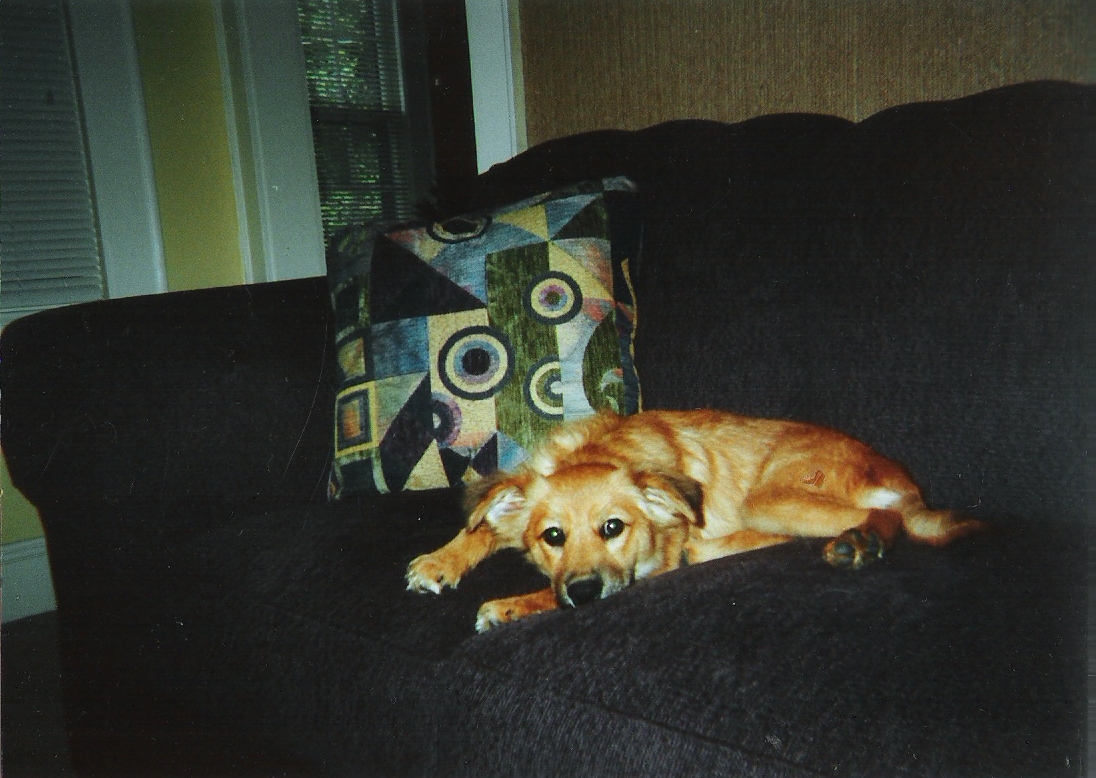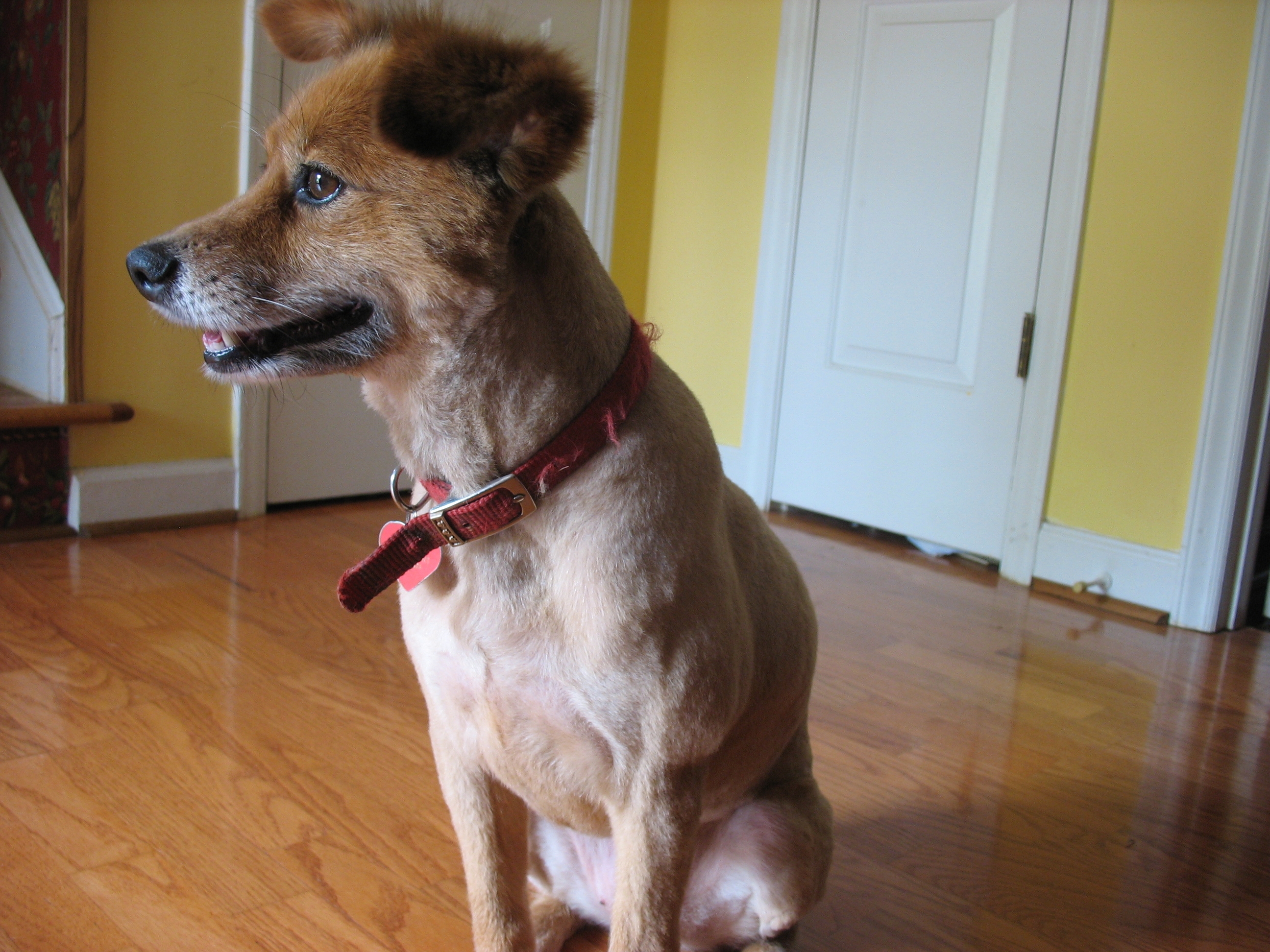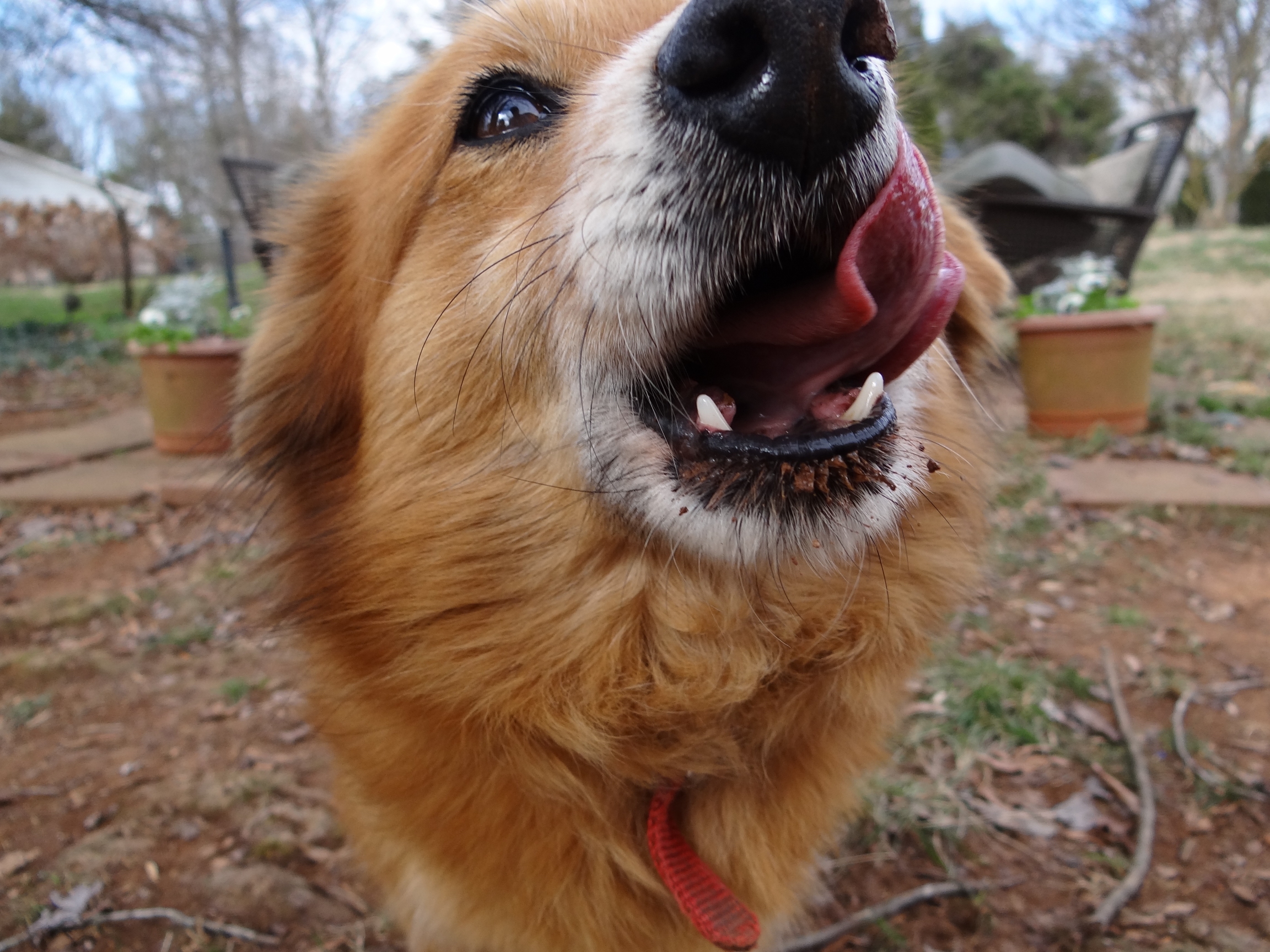FAMILY
Of life, and death, and a dog that was there for so much of it.
When I came downstairs last night to check on the dogs and lock up the basement, I had a sense that something wasn’t going to be right.
It had been a beautiful Saturday, warm and bright, and I’d spent the day working in the yard, putting out mulch and cleaning things up. The kids joined me at times, swinging and running around the yard, but most of the day it was just the dogs and me. Taylor, our youngest dog (although still coming up on her tenth birthday), followed me around. Zoe, our oldest, mostly slept in the sun.
Zoe, whom Kelly adopted in 2002, had had a rough go of it for the last six weeks. Just after the Christmas holiday, I’d come home to find her hobbling around on three legs, one of her back legs jutting out at an awkward angle. A trip to the vet confirmed only grim details: it would take surgery to fix the leg, and given that she was nearly 15 years of age and that she’d developed an obvious heart murmur, there wasn’t much point.
We left the veterinarian’s office with a bottle of pain pills and the advice that Zoe’s life might need our help to find a humane end. She spent the next couple of days mostly staying put, resting, rarely moving from one spot to another. I worried about knowing when the time would be right.
One morning, in the middle of January, I didn’t find her in any of her usual spots. The thought that had plagued me for days–that she would crawl off in the night to go and die under the deck steps–suddenly overwhelmed me as I searched the yard. But then I turned the corner, and there she was. When she saw me, she wagged her tail.

Zoe in 2002, after we’d first adopted her.
Over the next few weeks, we saw her adapt to a life of three good legs. She still spent lots of time resting, asleep in a bed of leaves in the warm sun, but she was at least making do.
Heart murmurs don’t kill dogs. They are simply the indicator that something in the cardiovascular chambers isn’t right–and that is the lethal trip wire. Zoe exerted herself more and more as she learned to walk on three legs, and last week, I noticed that a simple trip to the basement left her panting and struggling to calm her breathing. I’d read about congestive heart failure, and one by one the warning signs appeared. I’d often come downstairs to feed the dogs before I left for work and find Zoe outside, curled up in her spot in the sun. I’d shake the bowl of food, but she’d stay put. I carried her in and laid her next to the bowl, but she didn’t seem too interested. I realized how alarmingly light she’d become.
When I came down last night, I found Zoe in the basement, halfway on her bed, each breath inward quick and sharp, each exhalation rattling with wet sound. I called Kelly to come down. We moved her onto her bed and gave her water–she was too weak to stand–and comforted her, stroking her head, telling her over and over again what a good dog she was. We let her know we wanted her to rest, to get better, but it was okay if she needed to let go.
It seems an odd thing to do–to talk to a dog about dying–but in the moment it was as if she knew what we were saying.
Kelly went upstairs, and I lingered a while longer. There wasn’t anything more for me to do but tell her good night, and turn out the light, and go back upstairs. Still, I wanted the last thing she heard to be, Good dog.
I found her this morning curled up beside her bed, still.
After I told Kelly, we decided to bring the kids down to tell Zoe goodbye. They acted as young children ought to: Julia, aware that something definitive had happened, pulsed with a bright energy; Thomas, quiet and sensitive, struggled to really understand. When they’d returned upstairs, I brought in Taylor. I wasn’t sure how she’d react to her playmate’s death, but she seemed unconcerned.

Zoe, sporting a fresh haircut, in March 2012.
I decided to bury Zoe in the back yard. I picked a spot in the yard nearby the playset, a place I knew would warm with morning sunshine.
The task of digging a grave is its own form of grief. I had a pair of gloves and a good spade, but inches after breaking the top soil, I struck a dense patchwork of roots, folded like prayer hands across the rectangle I’d scratched out. I fetched an ax for the thicker roots, amputating them in single swings, then stopping to remove the pieces and stack them away from the hole.
The dirt piled higher. I took my time. Each shovel full of dirt was a sort of penance, an apology for every time I brushed Zoe away, too busy or distracted to bother with petting her, each struck rock a new shame for all of the times I swatted at her for (ironically) digging holes in the back yard. I plunged deeper and deeper, fifteen years’ deep for Zoe’s sake, the hole curving inward as they do at a certain depth, the smell of musty earth warming ever briefly in the sun before its return to darkness came.
I’d wrapped Zoe up in an old bed sheet and carried her out to the yard. Before I lowered her down, though, I swept up a pile of leaves from her regular spot in the yard and covered the bottom of the grave with them. In her last resting place, Zoe looked as though she were tucked in to bed, her head toward the swings where the children would soon come to play, one ear cocked up, ready to hear their laughter.
This is the hardest moment, when there is nothing to do but say a few words, stroke her soft fur one last time, and turn the dirt gently back in.
With the grave now marked by a mound of fresh earth, I put away my tools and came back out to sit on the timber wall we built over Christmas around the playset. Taylor came and sat with me, the two of us mulling the quiet February morning, broken up by birdsong.
Suddenly, as though she were a bloodhound, she raised her head in the air and began sniffing, rising up and putting her nose to the ground as she circled around and across the grave, pausing where I’d laid Zoe’s body before lowering it in. She threw her head back up to the trees again, trying to regain the scent, only to settle on the fence post, which she cautiously approached. There, at the top, was Zoe’s collar. I’d removed it before I buried her, in part to remember her by, and in part to acknowledge that this little girl was returned to God’s earth and ours no more.
Taylor only broke her gaze on the collar when I called her over. It seemed to me, at least, that the whole thing was starting to make sense.
The rest of my day was spent with the heavy feeling one carries after weeping. I opened up the house and cooked lunch. I went out for a bit. I took Julia and Thomas to my Dad’s house to play outside and pick up supper. Astonishingly, I learned that my close friend, Austin, lost his dog Toby as well.

Zoe was not an extraordinary animal. Her one trick, if you can call it that, was an ability to hunt vermin in a habitat full of good hiding places. Her fuzzy, rust-colored fur was always left behind where ever she’d been, tufts of it stuck to the deck furniture, tumbling about the grass, left in little piles in the basement. Or on your lap. Her habit for suggesting you pet her was to simply put her head up under your hand. Even though she had a perfectly cozy bed inside the basement, she often preferred sleeping outside, even in winter. She was a dog’s dog, and she smelled like one.
And yet she’d shared so much history with us. Kelly adopted Zoe after we found her in front of Sears, where we were going to have our engagement portrait made. (How’s that for an anachronism?) She lived with her in our first house, the Green House, and saw us married. She moved to Pebblestone Court and later to our current house. She met all three of our children.
Even now, as I sit in my office writing this, a small plastic baggie with her medicine sits on the corner of my desk. I am not sure what to do with the bag of food we fed her, or her bed, or her water and food bowls. I am not sure if Thomas realizes the dog he loved petting the most won’t ever sidle up beside him on the deck again. I worry about Taylor, having to now occupy the yard by herself.
Zoe’s decade and a half was much heavier than I first thought, particularly for a dog who, at the end of her life, weighed only about 25 pounds. Our little red and brown dog, quiet and unassuming as she was, is gone. And we cannot help but notice.
Good dog.






Leave a Reply